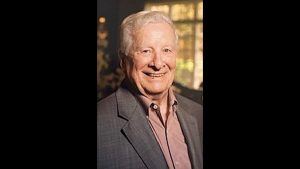Changes part of new vision for CAJE, JFed
Published August 8, 2012
Significant changes are in store this fall for the relationship between the local Central Agency for Jewish Education (CAJE) and the Jewish Federation of St. Louis.
Starting Sept. 1, the Federation will move three programs over to the Judaic educational entity while Sonia Dobinsky, CAJE’s executive director, will shift 35 percent of her time to work within the Federation as a senior level planner. The reshuffling is designed to create closer connections between the communal agencies in order to promote objectives laid out in the Federation’s strategic plan.
ADVERTISEMENT
“Our expectation is that this will accelerate our ability to develop programs that address Jewish education and identity and bring them forward for success,” said Barry Rosenberg, president and CEO of the Jewish Federation. “This is a core of our strategic plan and we are very committed to the issue of Jewish identity and engagement.”
Part of the move will see a restructuring of the CAJE into four departments: Community Engagement and Education, Jewish Kids in St. Louis, Teen Initiative and the Israel Experience and Engagement Center. The agency will also redefine itself adding “engagement” to its educational mission.
A trio of Federation-administered initiatives will also be relocated in the transfer. They are PJ Library, Concierge for Families with Young Children and One Happy Camper. The last is part of a national program designed to promote Jewish overnight camping. No changes in staffing are planned and Dobinsky doesn’t think recipients will see any immediate difference in services.
“Longer term, what they’ll see is that the resources that our agency has to couple with those programs will create enhanced offerings and opportunities for families with young children,” she said.
ADVERTISEMENT
Dobinsky said the advantage of CAJE’s tighter ties to the Federation will become more obvious as the next generation of youth transitions through different stages of life.
“The children who age out of the PJ Library program will be more closely connected with other community programs,” she said. “It gives them the opportunity to seamlessly allow people to move through the Jewish community system. We’re providing a variety of doors for them.”
Dobinsky said it will permit the umbrella agency to utilize CAJE’s expertise while the Federation concentrates more on fundraising and planning issues.
She also feels the move reflects a deeper national discussion.
“Central agencies and Jewish federations around the country are exploring ways to strengthen their relationships and maximize their use of expertise as well as resources,” Dobinsky said. “Federations know that donors connect to educational programs and central agencies are uniquely placed in that. They often house expertise and in addition they are not membership based in that they have no constituency that is based on funding to buy in so it’s a really interesting place to be.”
Ruth Raskas, chair of the Federation’s “Ensuring the Jewish Future” Committee, thinks the move is a positive one.
“The community really needs to think of this as people taking the time to assess our current landscape, and figure out what we need to put in place to get to the ultimate goal of our strategic plan and this is a real opportunity to do that,” she said.
Raskas believes that the idea could help to keep the community adaptable to present realities.
“The way things have worked historically are changing,” she said. “The community is changing and the question is, ‘How do we create the right infrastructure so we are ready for that change and we’re ready to spearhead that change?’”
Rosenberg said the move, which was in the planning stages for about seven or eight months, is designed to create synergy and services will not be cut back.
In fact, Federation has increased money directed towards identity and engagement by 30 percent despite an overall decline in available funds due to a series of bruising annual campaigns.
Rosenberg believes the model could be emulated elsewhere.
“We were informed by the way some other communities approached the subject of planning and service provision but when we developed this it was a unique idea for us in St. Louis,” he said, noting that some other federations might consider similar ideas.
Michael Oberlander, vice chair of planning and allocations for the Federation, is also optimistic.
“At the ground level, I think the first thing we’re going to see is CAJE’s impact increase, its ability to address some of the key parts of our strategic plan,” he said.
He also thinks working more closely with Dobinsky will be a benefit as well.
“I’m very glad that we’re going to benefit from Sonia’s wisdom and her experience,” he said.
Rosenberg believes it is the beginning of a success story.
“This is another example of how St. Louis is innovating around how to meet the needs of the community,” he said. “This is a new form of Federation and agency working together.”















